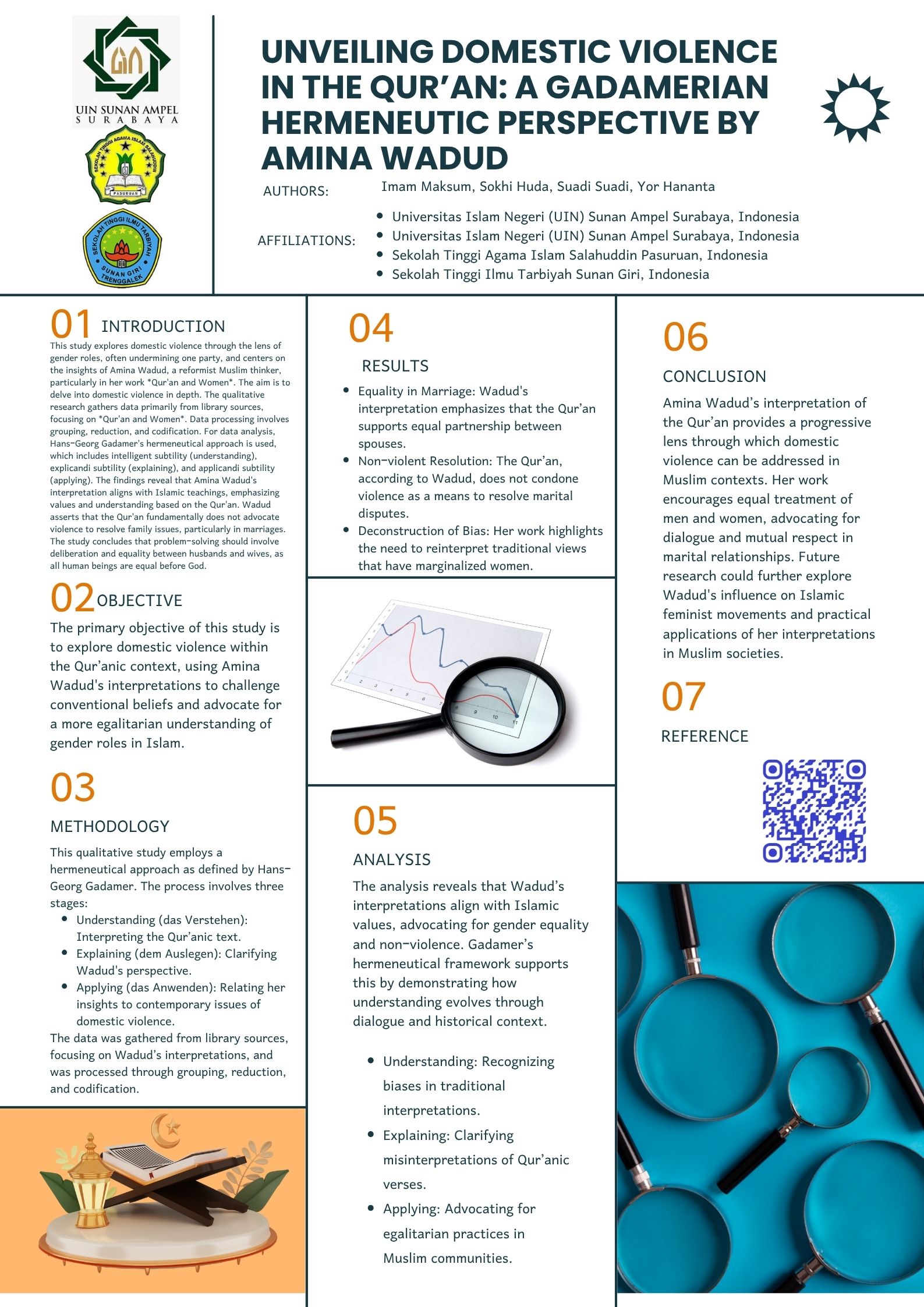Unveiling Domestic Violence In The Qur’an: A Gadamerian Hermeneutic Perspective By Amina Wadud
Keywords:
Unveiling, Domestic Violence, Qur'an, Gadamerian HermeneuticAbstract
This study explores domestic violence through the lens of gender roles, often undermining one party, and centers on the insights of Amina Wadud, a reformist Muslim thinker, particularly in her work *Qur'an and Women*. The aim is to delve into domestic violence in depth. The qualitative research gathers data primarily from library sources, focusing on *Qur'an and Women*. Data processing involves grouping, reduction, and codification. For data analysis, Hans-Georg Gadamer's hermeneutical approach is used, which includes intelligent subtility (understanding), explicandi subtility (explaining), and applicandi subtility (applying). The findings reveal that Amina Wadud's interpretation aligns with Islamic teachings, emphasizing values and understanding based on the Qur'an. Wadud asserts that the Qur'an fundamentally does not advocate violence to resolve family issues, particularly in marriages. The study concludes that problem-solving should involve deliberation and equality between husbands and wives, as all human beings are equal before God.
Downloads

Published
How to Cite
Issue
Section
License
Copyright (c) 2023 Imam Maksum, Sokhi Huda, Suadi Suadi, Yor Hananta

This work is licensed under a Creative Commons Attribution-ShareAlike 4.0 International License.

 Universitas Islam Negeri (UIN) Sunan Ampel Surabaya, Indonesia
Universitas Islam Negeri (UIN) Sunan Ampel Surabaya, Indonesia













 All publications by the CV. Bimbingan Belajar Assyfa [e-ISSN:
All publications by the CV. Bimbingan Belajar Assyfa [e-ISSN: